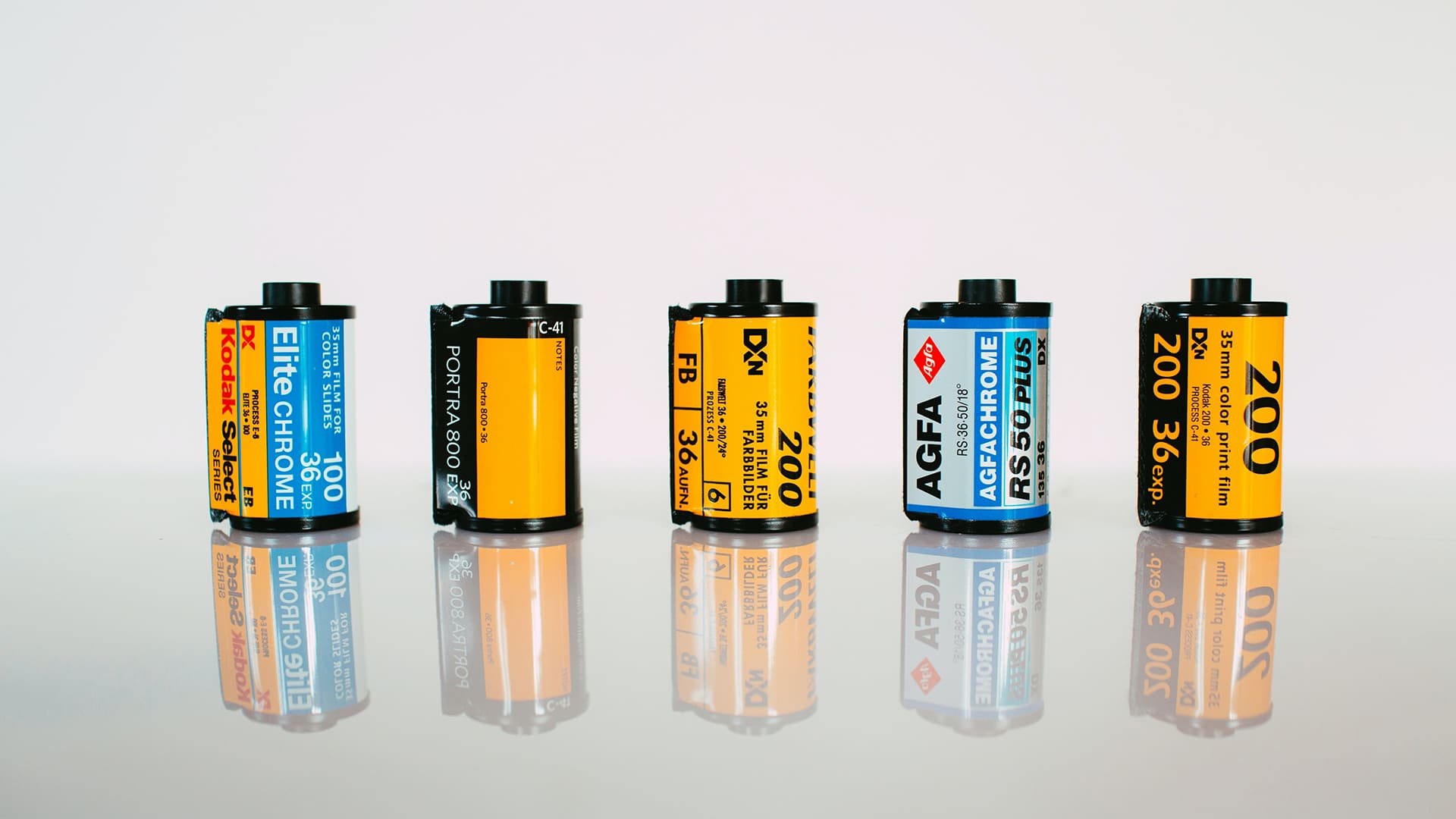
Photo by Markus Spiske on Unsplash
Black & white or color?
Unlike in digital photography, which allows you to easily switch from color to black & white, and vice versa, in analog photography you have to make your choice ahead of time. This choice is decisive, since you will not be able to change your mind until you move on to the next roll.
First, decide whether you wish to photograph in black & white or in color. For those who want to try their hand at home developing, it is best to start with black & white film, which is much easier to process.
How many shots?
As you probably know, film comes with 24 or 36 exposures. Some film formats, less common nowadays, have twelve exposures. It is up to you how many shots you want to take at a time. Personally, I always prefer to have more shots than not enough and to give myself some room for maneuver in case of mishaps.
Remember, however, that it will cost more to develop 36 exposures; which is logical since there are more images.

Photo by James Lansbury on Unsplash
Negative or reversal film?
Most film on the market is negative film, but there is also positive film, known as reversal or slide film. Negative film is cheaper and easier to process (C-41). Slide film is often twice as expensive and the processing (E6) is complex and costly. Many laboratories no longer process slides.
The advantage of reversal film, however, lies in its specific color rendering and the fact that the final image is immediately visible on the developed film, which is not the case with a negative. If you are a beginner, we recommend starting with a conventional negative film.
Film speed
Choosing the speed of your film is the next important step. Speed measures the sensitivity of the film, ranging from ISO 25 to 3200. As in digital photography, the lower the sensitivity, the less sensitive the film is to light. Excellent lighting conditions or appropriate camera settings (slow shutter speed and wide aperture) are required to obtain properly exposed images.
If you like to take pictures at night, you will want to opt for a higher speed. Note, however, that the higher the film speed, the grainier the film. However, this is more a question of aesthetic than in the case of digital noise, and it may be a deliberate choice.

Photo by MARK S. on Unsplash
Image rendering in different brands
Once you have chosen between color and black & white, determined the number of exposures you need, selected negative or reversal film, and found your preferred film speed, it is time to choose the brand. Kodak and Fujifilm are best known for their color film; Ilford has a reputation for black & white; but there are other manufacturers: Fomapan, Washi, Rollei, Revolog, Lomography, etc.
The choice of the brand will have an impact on the rendering of your film. This can be at the level of color rendering, with predominant warmer or cooler effects, contrast levels, darker or less saturated colors, etc. Look on the internet for sample testing of the different film brands. The ultimate preference is always a personal choice. To start with, try several films to compare or to stick with one brand if it suits your needs.
Conclusion
The choice of film may be driven by chance, but if you take the time to select your film according to your needs, you will save time and will be less likely to be disappointed.
Five simple steps will help you to choose the right film: decide on (1) black & white or color film; (2) the number of frames adapted to your practice; (3) negative or slide film, each requiring a different process; (4) ISO sensitivity, determined based on the type of shots and lighting conditions; and (5) the best brand for the type of image rendering you are looking for.
Choosing your film means thinking ahead about the shots you are going to make, and it is an important first step in planning your analog photography project.

Photo by diana on Unsplash

Photo by Markus Spiske on Unsplash
By Céline Nebor


